Beef fajita soup comes together in one pot with tender, thinly sliced beef, bright bell peppers, and a savory onion base. Sear the beef until deeply browned, then gently simmer with low-sodium broth, cumin, paprika, and a hint of chili powder to amplify the smoky fajita notes. Add tomatoes and peppers gradually, letting flavors meld while you watch the color shifts. Finish with a lime lift and cilantro, and discover how the broth stays silky and bold as you continue.
Ingredients and Quantity
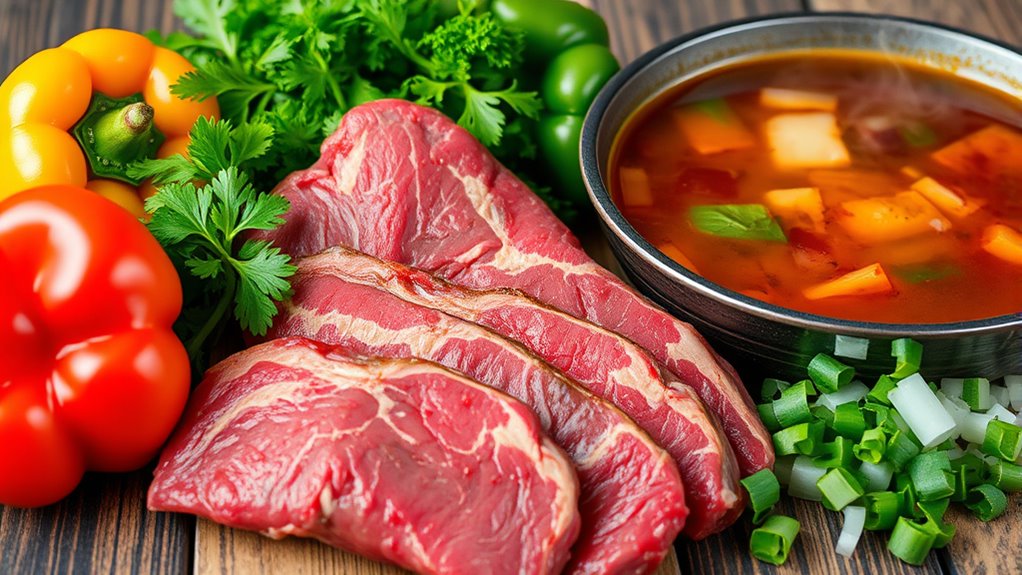
To make Beef Fajita Soup, you’ll need a precise set of ingredients and exact quantities to balance flavor and texture. You’ll feel the pull of clarity as you measure, choose, and compare, and you’ll discover why beef cuts matter and how seasoning options shape every bite. You select lean chuck for tenderness, bell peppers for brightness, onions for snap, tomatoes for acidity, garlic for warmth, and broth for body. Salt, pepper, cumin, chili powder, and paprika become your tuning forks. BE careful with oil and lime juice to avoid heaviness. Table below illustrates options.
| Item | Quantity | Notes |
|---|---|---|
| Beef cuts | 1 lb | Sliced thin |
| Bell peppers | 2 | Mixed colors |
| Seasoning options | 1 tbsp total | Combine spices |
| Onion | 1 | Sliced |
| Broth | 4 cups | Prefer low-sodium |
Preparations
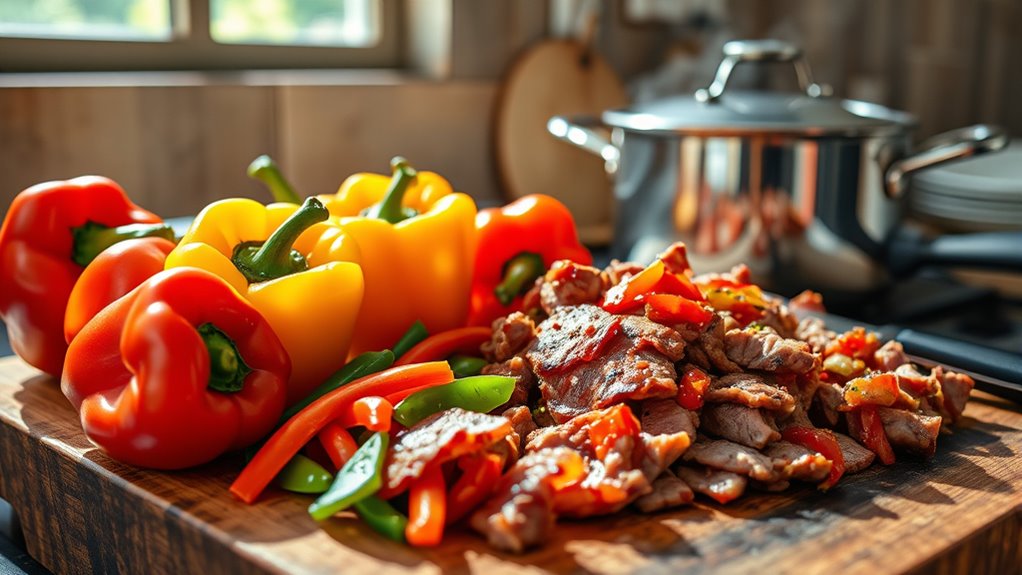
Before you start cooking, gather and prep everything so nothing slows you down: slice the beef thinly, julienne the bell peppers, and thinly slice the onion. Your preparations set the stage for confident cooking. Keep the beef cool and lightly seasoned to preserve tenderness, then let peppers and onion mingle in a single, organized tray for rapid access. As you sear, monitor color changes and aroma to guide timing, ensuring a flavorful base without overcooking. This phase focuses on meal prep rhythm, so you stay in control and energized. Think about flavor infusion: a light sprinkle of cumin and paprika early, a quick zest of lime later, elevating depth without masks. Precision here powers every simmer, every bite.
Kitchen tools or Kitchenware Required
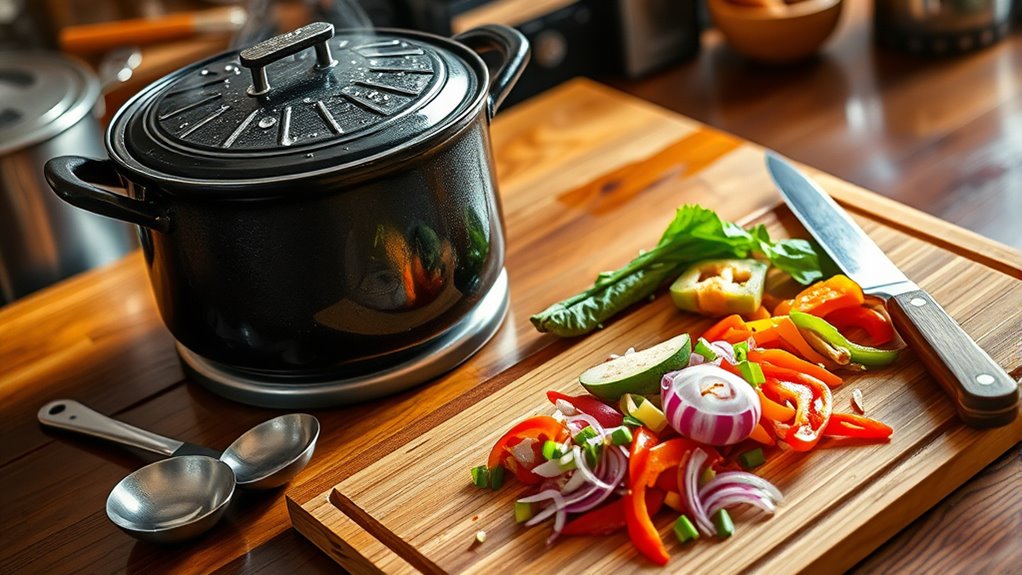
Gather the right tools before you begin: a heavy-bottomed pot or Dutch oven for steady heat, a sharp knife, a cutting board, and a wide skillet for searing the beef. You crave control, so select gear that translates intention into texture. A soup ladle sits ready for silky broths; the cutting board protects your counter and your knife edge. Keep measuring spoons and a tongs set within reach. The skillet should hiss with fat, the pot with confident steam. Use the table below to pace your rhythm as you prep, sear, and simmer, guiding every motion with purpose.
| Tool | Purpose | Tip |
|---|---|---|
| Cutting board | Prep | Stable, clean surface |
| Sharp knife | Trim & dice | Maintain blade edge |
| Soup ladle | Serve | Portion with ease |
How to Cook
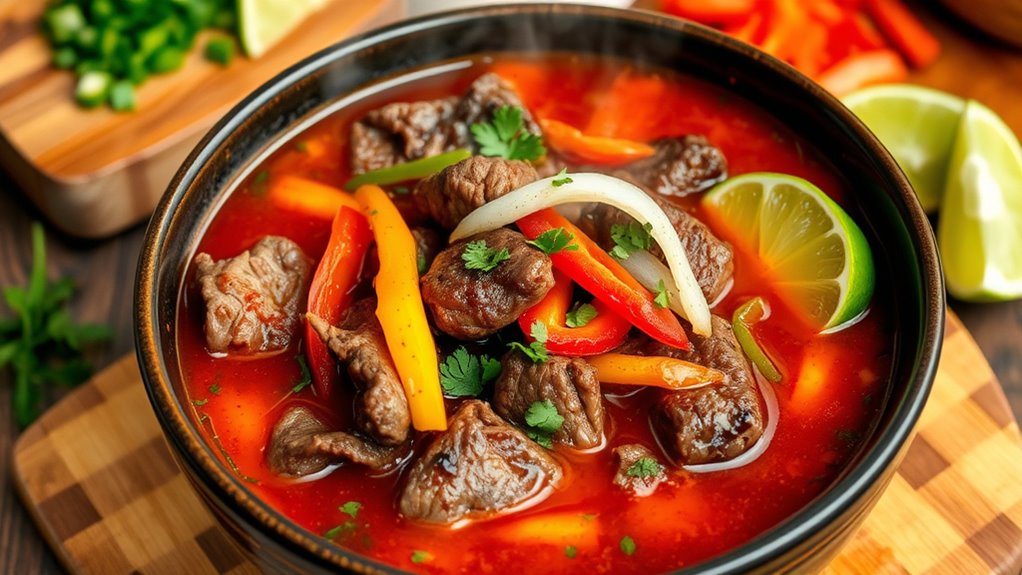
- Sear the beef until it is deeply browned to develop rich flavors.
- Reduce the heat to gently cook the beef until tender, avoiding scorching.
- Add onions, peppers, and spices gradually, pausing to observe color changes and aromas.
- Maintain steady, moderate heat to release tenderness without overcooking.
- Monitor simmering juices carefully throughout the cooking process.
- Introduce tomatoes and broth with measured amounts to build subtle flavors gradually.
- Apply cooking techniques like tear-free chopping, maintaining correct pan temperature, and seasoning carefully.
- Balance flavors by adjusting salt, citrus notes, and heat.
- Finish with a brisk simmer, tasting periodically and adjusting seasoning for a clear, vibrant broth.
- Embrace precise and attentive cooking methods to enhance flavor and texture.
How to Serve
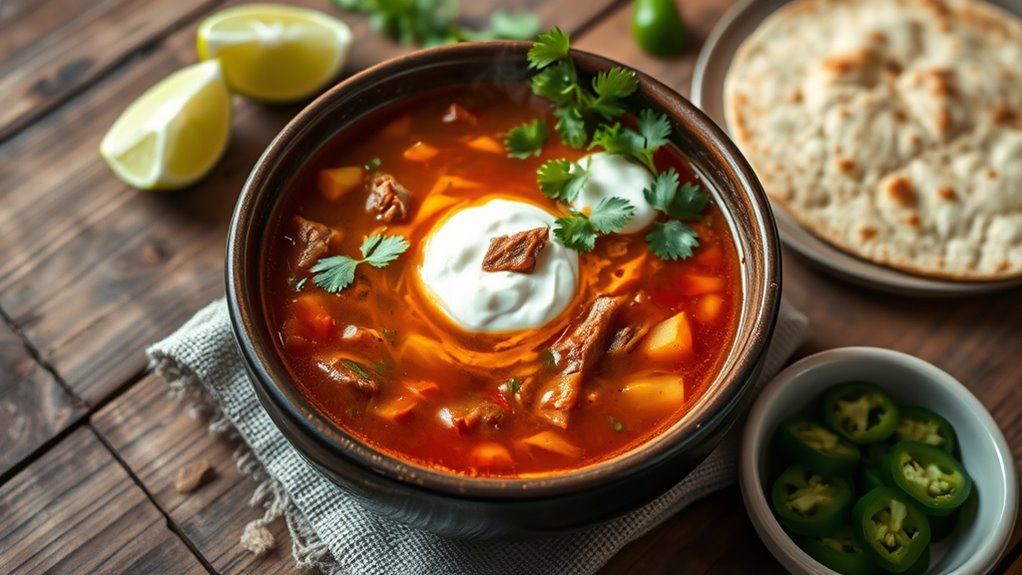
After the beef is browned and the vegetables have softened, you’ll shift focus to serving in a way that keeps the fajita soup’s flavors vibrant and inviting. You’ll ladle hot portions into bowls, letting steam carry the aroma of peppers, cumin, and beef forward. Keep toppings simple yet bold: a squeeze of lime, a scatter of chopped cilantro, and a dollop of sour cream if you crave creaminess. Garnishing options should enhance, not hide, the broth’s clarity. Offer crusty bread or warm tortillas on the side for dipping and scooping. Present serving suggestions that invite customization—let guests adjust heat with sliced jalapeños or hot sauce. This approach honors curiosity, precision, and the freedom to tailor each bowl to taste.
Tips
Here are a few quick tips to elevate your beef fajita soup: start with a well-seasoned base by browning the beef in a hot pan to develop deep flavors, then deglaze with a splash of broth to lift every tasty brown bit. For spice selection, tailor heat to your crowd—roast peppers for smoky sweetness, add chili powder for warmth, and finish with a squeeze of lime to brighten everything. Focus on cooking techniques that preserve texture: sear beef in small batches, then rest before chopping, so you keep tenderness intact. Build layers by sautéing onions, garlic, and peppers separately to control sweetness and aroma. Balance acidity with tomatoes or a touch of vinegar, and taste as you go to maintain clarity and freedom in every spoonful.
Food Value and Benefit
Beef fajita soup is a nutrient-rich dish that combines lean beef with a variety of colorful vegetables, providing a balanced and wholesome meal. This recipe delivers essential vitamins, minerals, and protein while supporting overall health and well-being.
Benefits of eating beef fajita soup include:
- Provides high-quality lean protein for muscle maintenance and repair
- Contains low-glycemic vegetables that promote sustained energy and stable blood sugar levels
- Rich in iron, which supports healthy blood oxygen transport
- Supplies zinc, vital for immune system function and wound healing
- Offers vitamins A and C from peppers and tomatoes that boost immune health and support metabolic functions
- Helps keep you hydrated and mentally clear through natural electrolytes in the broth
- Supports satiety and helps manage appetite, making it suitable for mindful eating and weight management
Frequently Asked Questions
Can I Substitute Beef With Chicken or Turkey in This Soup?
Yes, you can swap in chicken or turkey. Around 70% of home cooks report similar satisfaction with poultry. You’ll notice chicken flavor differs, while turkey texture stays tender; adjust cook times, seasoning, and fat to suit your tastes.
What Are Good Gluten-Free Thickeners for This Soup?
You can use cornstarch slurry or arrowroot powder as gluten-free thickeners. You’ll notice a smooth texture with cornstarch and a glossy finish with arrowroot, but add gradually, watching heat to avoid clumping or thinning. Curious cooks choose precisely.
How Long Can Leftovers Be Safely Stored in the Fridge?
Five days is the safe window; refrigerate promptly, keep at 40°F (4°C), and reheat to steaming hot. Leftover safety matters. Storage tips: seal tight, label dates, and discard if off-smell or strange texture—freedom deserves caution.
Can I Freeze This Soup Without Compromising Texture?
Yes, you can freeze it, but follow freezing tips to protect Texture preservation. Chill briefly, portion, and airtight-wrap, then freeze promptly; thaw slowly, reheat gently, and expect slight changes that you can mitigate with careful reheating and fresh toppings.
Is This Recipe Adaptable for Spicy or Mild Preferences?
Yes, you can tailor it to spice levels, from mild to hot, by adjusting jalapeños, chili powder, and cayenne, then tasting for flavor balance as you go, inviting personal freedom in your soup’s heat without overdoing it.
